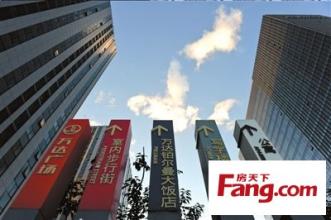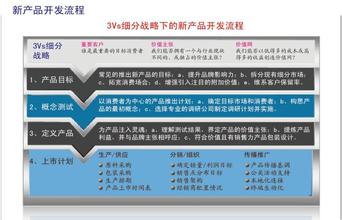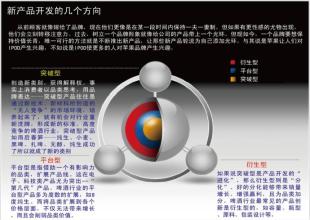Brand engagement can be a powerful tool for transforming an organization and unlocking business growth.Everyone seems to be talking about brand engagement these days. Call it what you will—internal branding, brand assimilation, brand alignment, employer branding—this is probably not the first time you‘ve been introduced to the concept. You‘ve heard its advocates speak at conferences and listened to agencies pitch its glories. So why all the excitement? Can brand engagement really transform an organization?A brand engagement project requires a clear commitment of time and money, but the return it provides is far murkier. In a typical brand launch, you get a day of glossy presentations, a film and a desktop giveaway, followed by a series of workshops. But what tangible benefit does such a program actually provide? What do you really get for your money? Is brand engagement just a case of the emperor‘s new clothes?The answer depends on how you handle it. When it’s done right, brand engagement succeeds in transforming an organization. When it isn’t, the brand sits like an imaginary robe on the shoulders of a king, trumpeted with accolades but offering no real substance.A successful engagement program fundamentally shifts brand to the center of an organization. There it becomes the focus of everything a company and its employees think about and do. With this new mind-set, brand becomes not only a medium of communication with the outside world but also a driver of internal behavior. The result is a transformation in the way business is conducted throughout an organization. All employees aim to deliver on the brand promise when making strategic decisions, developing new products or interacting with customers.aihuau.comThe payoffs are remarkable. Just look at Southwest Airlines. Business strategy and advertising alone don‘t account for the low-cost carrier’s financial success. By ensuring that its people are part of its brand, Southwest pioneered a coveted airline subcategory, forged a powerful brand imprint and earned impressive returns in a failing industry.The 1995 Harvard Business School case study “Southwest Airlines: Using Human Resources for Competitive Advantage” concludes that by incorporating human resources into its core strategy, the airline has been able to establish a sustainable advantage over its competitors and earn substantially better returns. Southwest has consistently been one of the most profitable U.S. airline carriers at the same time that it’s been recognized as one of the best places to work. Even in 2002, a devastating year for the airline industry, Southwest had a net income of $241 million.Executives at Sears, Roebuck and Co. similarly found that their employees’ attitudes affect employee retention, which in turn affects customer satisfaction and financial performance. The study by Sears executives, “The Employee-Customer-Profit Chain at Sears,” was published in Harvard Business Review in 1998. More recently, Research International has uncovered a strong correlation between the degree of employee belief in a company’s brand and customer satisfaction and profitability. Such findings suggest that employees who are excited about a company‘s vision and feel instrumental to its achievement are happier, more motivated and stay in their jobs longer. Customers enjoy the fruits of good morale and, in turn, are more satisfied and loyal. And profitability—that coveted indicator of success—almost always goes up.Putting Brand at the CenterFar too often, brand engagement programs deliver more lip service than substance to an organization and leave only a fleeting imprint. Some end up as navel-gazing exercises; others are dry, process-led training workshops.Putting brand at the center of a business is admittedly a long-term effort, not an overnight fix. Many organizational systems need to be revisited, such as key performance indicators and employee rewards. But the trick to making it all work lies in providing an engaging or inspiring dimension as well as a practical component that grounds the brand in day-to-day activities. A successful program will engage employees emotionally and outline actions they can take to support the brand promise.Make it memorable. People remember the things that excite them, and you want your brand to be one of them. A new brand should stick in the minds of employees long after they leave the launch presentation. This is no easy task; it requires a certain familiarity with employees and a dose of ingenuity.Painting a portrait of the future can be a powerful way to make a brand real and to generate excitement. Attempts at this are sometimes made in films about a brand through swelling sound effects and footage of soaring eagles. But tangible visuals that capture the potential of a brand are more effective. One accounting firm used a 30-minute play to unveil its new brand to 300 senior partners. The play began by depicting current life at the company and its difficulty functioning as a global entity, then fast-forwarded three years to show what things might be like for employees and clients once the new brand became fully embedded in the company. The play made such an impact that participants ranked it highest among all events at the three-day conference.Symbols and stories also help make a brand memorable and keep it fresh. One seemingly small but effective touch that energy giant BP uses is placing potted aloe vera plants in the lobby of its headquarters. Of all the green plants, aloe vera converts the most carbon dioxide to oxygen. As such, it embodies a core value of the BP brand: to be “green.” Every day as employees walk into the office, the plants remind them of their shared corporate vision—to go beyond petroleum—and the imperative to develop renewable energy.Connect it to the customer. Brands make a promise to customers through their marketing and advertising messages. A truly aligned organization delivers on this promise at every point of customer contact. To illustrate, each customer‘s experience with an airline begins when she surveys ticket prices and doesn‘t end until she arrives at her destination and retrieves her luggage. A brand promise should be delivered consistently at each touch point along the way: when passengers arrive at the airport, wait in line at the counter, interact with flight attendants, or stretch out in their seats. To achieve consistency, it is crucial for employees to understand how to deliver brand to the customer.Employees often leave the fanfare of a brand launch excited and motivated but unsure of how to put their new ideas into practice. The customer journey helps employees visualize the way their specific role within the firm influences brand delivery by mapping each instance that a customer touches a brand. For example, people in charge of a company’s user interface or network services need to realize that they have an even larger role to play in delivering the brand promise than do customer service representatives and sales associates.The framework of the customer journey can be used by management and employees alike to focus on important touch points, identify off-brand delivery and benchmark areas for improvement. When people are involved in this process, they become part of the solution rather than the problem. Employees at a mobile phone company, for example, came up with an idea for a new pricing structure. Their plan was simpler and more transparent than the original, and it better fulfilled the brand‘s promise of simplicity. The new pricing plan has been a huge success for the mobile phone company with far more customers signing up for it than ever anticipated.A Call to ActionSo what do you get for your money with a brand engagement program? You get a powerful tool for unlocking business growth. Why? Because this process puts brand at the center of your business and drives transformative behavior.Brand engagement doesn’t bombard people with autocratic orders; instead, it gives people the vision, structure and confidence to turn brand into action. Think about Virgin Airlines, which offers in-flight massages. It’s easy to imagine that the person who came up with that idea was someone at headquarters who was grounded in the intricacies of the brand and thinking about in-flight products and services. To Virgin Atlantic, the massages are much more than good customer service; they provide a way to differentiate its in-flight experience.Brand at its best can be a people management tool. Those who understand the brand and believe in it lead the company in the right direction. That‘s powerful change. And there’s nothing imaginary about that.公司转型、打破禁锢业务增长枷锁的强大武器就是品牌实践。一直以来,似乎人人都在谈论品牌实践。各种说法很多:无论是内部品牌建设,还是品牌同化,抑或是品牌联盟、雇主品牌,等等,这个概念都不是一个新鲜词。它出现在各种会议上,并被代理们高调隆重吹捧。人们为什么对这个概念如此津津乐道呢?品牌实践真的能让公司打翻身仗吗?

品牌实践项目需要投入大量时间和资金,回报却未必丰厚。在品牌推介会上,光鲜的介绍,广告短片,赠送电脑,再加上一系列的研讨会,热闹非凡。但是公司真能受益于这些营销活动吗?花出去的钱有什么回报?品牌实践难道只是个装满皇帝新衣的衣箱吗?答案取决于你怎么做。如果做对了,品牌实践会成功改变公司;如果没做对,品牌就会像挂在皇帝肩上那件凭空想像出来的长袍,虽然被吹捧得天花乱坠,可是毫无用处。成功的品牌实践计划可以把品牌推到公司的中心地位,成为公司和员工思想与行动的指挥棒。有了这个中心地位,品牌不仅是公司和外部沟通的媒介,更是促进内部员工表现的推动力,最终引发全公司经营方式转变。无论是制定战略决策、开发新产品,还是实现与客户互动,所有员工都朝着实现品牌承诺这个共同目标而努力。品牌实践的回报是非常显著的,只要看看西南航空公司就知道了。业务战略和广告并不是这家低成本公司取得财务成功的原因。西南航空靠的是把员工转化为品牌的一部分,他们另辟蹊径,打造了强势品牌,在每况愈下的航空业获得了令人瞩目的营业收入。1995年,哈佛商学院进行了一项题为 “西南航空公司:利用人力资源获得竞争优势” 的案例研究,得出了这样的结论:通过把人力资源纳入核心战略,西南航空能够建立超过竞争对手的持久优势,打造卓越的盈利表现。西南航空一直以来就是美国最盈利的航空公司之一,同时名列最适宜工作的公司之中。即使在航空业一败涂地的2002年,西南航空的净收入也达到了2.41亿美元。类似的例子:西尔斯公司的高管们也发现,员工的态度影响到员工的保有率,保有率反过来又会影响顾客满意度和公司的财务表现。管理层作了一项名为“西尔斯员工-顾客-利润链条”的研究,发表在1998年的《哈佛商业评论》上。研究国际咨询公司通过调研揭示了雇员对公司品牌的信任程度、客户满意度与公司盈利能力之间的相关性。这些研究结果表明,对公司远景充满向往、感觉自己对公司的业绩至关重要的员工工作起来更愉快,更有干劲,在公司呆的时间更久。顾客喜欢公司这种令人振奋的士气,从而对公司更加满意、更加忠诚。因此,令人人垂涎的盈利能力这个成功的指标也不断上升。品牌至上一般公司的品牌实践计划常常是停留在口头,没有落到实处,说过一阵也就被人遗忘了。有的计划只是吸引眼球的演习,其他的则成了按部就班、令人乏味的培训研讨会。要想让品牌成为公司一切的焦点,必须付出长期的努力,这不是一时之举。公司必须不断对各种组织系统进行重审,比如关键绩效指标、员工酬劳等等。但是要真正做到品牌至上,就要全力以赴,采取实际行动把品牌根植于公司的日常运营中去。成功的品牌实践计划会让员工从思想上、行动上都真正支持品牌承诺。深入人心人总是对激动人心的事情记忆犹新,公司也希望自己的品牌能达到同样的效果。但是要让新品牌推出很久之后还能长留在员工的记忆中,绝非易事。要让员工熟悉品牌,的确需要花一些心思。描绘未来的美好前景当然是让品牌深入人心的好办法,有时候公司会用震撼人心的音效和雄鹰搏击长空的画面来达到这个目的。但是能够抓住品牌潜力的真正视觉呈现可能更加奏效。有一家会计师事务所就采用了一部30分钟的话剧来向300个高级合伙人推出它的新品牌。话剧以描述公司现在的日常经营开始,揭示它作为跨国公司的种种艰难,然后展望新品牌完全根植于公司的3年后,员工和客户会有什么收获。这部剧反响热烈,被与会者公推是为期3天的推介会上的亮点。象征符号和品牌故事同样能有助于品牌深入人心,令其愈久弥新。英国石油公司曾经在总部的大厅里摆放了许多芦荟盆栽,这个举措看起来毫不起眼,但却行之有效。在所有的绿色植物中,芦荟把二氧化碳转化为氧气的能力最强,它恰如其分地代表了公司品牌的核心价值:“绿色环保”。每天当员工们走进办公楼,芦荟都会提醒他们大家共同的愿景——超越石油,发展可再生能源。用品牌联系客户品牌承诺是通过营销和广告信息传递给客户的。一个真正言行一致的公司能够在和客户接触的方方面面兑现这个承诺。举例说明,每个和航空公司打交道的顾客都是先从查询机票价格开始,直到乘机到达目的地提取完行李为止。从乘客到达机场,在值机台前排队办票,与乘务员打交道,或者是在位子上舒展身体,航空公司的品牌承诺必须贯穿于这一切过程的每个阶段。公司的员工必须知道如何把品牌承诺带给乘客,才能保证承诺的兑现。每当公司推出新品牌,员工都会为推介会的浩大声势所激动,但在实际工作中,如何把新品牌的新观念付诸实践,他们却是茫然不知所措。“顾客旅程”能够帮助员工们直观地看到在客户与品牌接触的每一个场合,他们各自的工作如何对品牌产生影响。举例说明,主管公司用户界面或网络服务的人,必须认识到在兑现公司品牌承诺的过程当中,他们的作用要远远大于客户服务代表和销售代表们。管理层和员工可以利用顾客旅程的结构来重点搞好一些重要的接触点,找到不符合品牌承诺的环节,发现需要改善的领域。当他们开始做这些工作的时候,他们就不是制造麻烦、而是解决问题的中坚力量了。例如有家手机公司的员工们想到了一种新的定价方法,比原来的方法更简单、透明,而且更符合公司的品牌承诺——简单至上。采用了新的定价方案,公司获得的客户数量远远超过了预期目标。付诸行动那么,在品牌实践计划上的投入到底能给公司带来什么回报?答案就是你获得了一个启动公司增长的强大工具!为什么这么说呢?因为这个计划能把品牌推到公司业务的中心位置,推动全公司员工改善他们的工作表现。品牌实践不用官僚的指令来强迫员工采取行动,相反,它为员工描绘愿景,赋予他们信心,让他们自觉地把计划变为行动。看看维珍航空公司,他们提供机上信息服务。很容易就能猜到,想出这个点子的人肯定是公司总部负责品牌事务的人,他想到了机上产品和服务。对维珍来说,信息比优质的客户服务更有意义,因为信息服务让维珍的机上体验与众不同。品牌堪当人员管理的有力工具,管理那些了解品牌、相信品牌能够引导公司走上正确方向的人。这些人的转变威力无穷,有了他们,一切皆有可能。
 爱华网
爱华网



